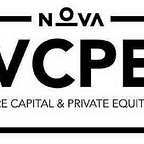Drivers of unicorns to stay private
The recent rise in US government bond yields caused a setback for technology companies’ stocks and strengthened the trend that technology companies postpone their IPOs as long as possible. The movement that technology stocks avoid public markets for a prolonged time has already continued for a long period of time. Since 2013, the number of technology companies with unicorn status, which stay private is increasing (Erdogan, 2016). Right now, there are 617 unicorns in the private market, of which 32 have decacorn status, and valuations ranging up to $140b (CB Insights, 2021). Not only is the number of private unicorns growing, but also the average age of the companies undertaking an IPO. While in times before the burst of the dot-com bubble in 1999, the average age of companies going public has been four years, nowadays the average age of companies going public lies around nine years (Ritter, 2021). Of course, partly regulatory changes such as the Jumpstart Our Business Startups Act passed in 2012, which increased the maximum number of shareholders a company in the US can have without further regulatory burdens, played a role. However, while private unicorns’ valuations are rising, their peers who decided to have an IPO in the last three years have performed poorly, which indicates that public markets are not sharing the euphoria for technology stocks of private markets (Abelson, 2015).
The enormous availability of private later-stage financing
A key driver for an increasing number of privately held companies with valuations of $1b is funding availability in the private market. From 2006 to 2020, the number of funds with a size of more than $1b doubled, and at the same time, LPs taste also shifted in favor of more considerable funds. Additionally, non-traditional investors searching for venture-like returns entered late-stage financing, which increased deal competition, pushed the valuations to higher levels, and caused further decoupling of private and public capital markets for technology companies (Pitchbook, 2020). As one can also observe in the KPMG Venture Pulse Q4, the valuations increased steadily since 2012 throughout all funding rounds. Especially in Series-D, the global median pre-money valuations reached a level of $525m in 2019, which further underpins why it is lucrative for technology companies to stay private for a prolonged time (KPMG, 2021).
The public market sentiment toward technology companies
However, the private funding situation is only one side of the coin, and the other side is the sentiment of public markets, especially towards smaller technology companies. Public investors generally prefer larger technology companies, considering their sales multiples at the time of their IPO or on their first trading days. For instance, comparing the sales multiples of companies below $500m market capitalization, which is around 1.7 times sales, with the multiples of listed unicorns with a sales multiple of 4.6 times sales, one can recognize the difference in valuation. Additionally, there is also a strong correlation between the company’s market cap on the day of the IPO and its performance after the IPO. Considering the median of the returns on the first trading day, technology companies with a market cap of over $1b return more than 4.5 times more on the first trading day than their peers with a market cap of under $500m. These facts indicate that public investors are very selective about IPOs of technology companies and that market capitalization plays a crucial role in their selection (Barron, 2015).
Restraining public market sentiment in combination with flourishing later stage funding encourages the growth of private companies with valuations over $1b
All in all, the mix of an increasingly conducive private funding environment enables companies to reach a certain scale without an IPO, thus keeping regulatory efforts at a minimum. However, another critical point is that it takes public investors the chance to participate in success stories at an earlier point in time and profit more heavily from the best-performing startup companies.
Disclaimer
This newsletter is fully independently produced by the members of the Nova Venture Capital and Private Equity Club. This club is run by students of the Nova School of Business and Economics.
Sources:
Abelson, Jeremy et al (2015): Why are companies staying private longer? Barrons. Available at: https://www.barrons.com/articles/why-are-companies-staying-private-longer-1444411528 . Accessed at: 01.04.2021
CB Insights (2021): The complete list of unicorn companies. CB Insights. Available at: https://www.cbinsights.com/research-unicorn-companies . Accessed at: 01.04.2021
Erdogan, Begum et al (2016): Grow Fast or die slow: Why unicorns are staying private. McKinsey. Available at: https://www.mckinsey.com/industries/technology-media-and-telecommunications/our-insights/grow-fast-or-die-slow-why-unicorns-are-staying-private. Accessed at: 01.04.2021
KPMG (2021): Venture Pulse 2020 Q4. KPMG. Available at: https://home.kpmg/xx/en/home/campaigns/2021/01/venture-pulse-q4.html . Accessed at: 01.04.2021
Pitchbook (2020): Private Fund Strategies Report. Available at: https://pitchbook.com/news/reports/2020-annual-private-fund-strategies-report . Accessed at: 01.04.2021
Ritter, Jay et al (2021): Initial Public Offerings: Median age of IPOs through 2020
